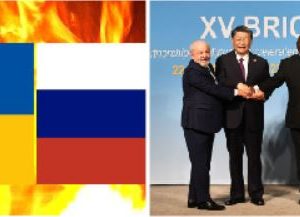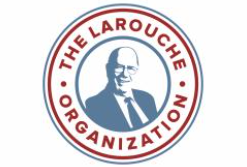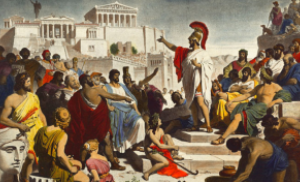with the New Silk Road Project.
Dr. Saad Mohamed Mahmoud Elgioshy
Former Transport Minister of Egypt.
Video; english transcript

Integration of Egypt’s Transportation Plan 2030 with the New Silk Road Project
This is an edited transcript of a presentation by Dr. Saad Mohammed Mahmoud Elgioshy, former Transport Minister, Egypt, on Nov. 25, 2017, in Bad Soden/Taunus, Germany. Subtitles have been added. Good Morning! I am Saad Eligioshy, a Ph.D. Doctor, a specialist in transportation, airports, and roads. I am the former Minister of Transport in Egypt (2015-16).
Transcript
I’d like to thank Mrs. Helga Zepp-LaRouche for her nice invitation.Also I’ll thank the organizer of this conference, the Schiller Institute, which really touches on some of the benefits for Egypt. The lecture I heard from you today was very interesting.
In my presentation I will speak about Egypt, a very old country—7,000 years—and how it will interact with the New Silk Road. You heard, before me, a very nice presentation by Prof. He Wenping, about the New Silk Road, how it will work in Africa. As I said, I represent one country in the north of Africa. I will speak about how we can interact with the New Silk Road.
I will focus on the integration of Egypt’s transportation development plans. I’ll discuss the transportation issue, which is an infrastructure issue, which affects the development of any country. So, transportation development plans and the New Silk Road Project.
In a very brief introduction, I’ll discuss the current transportation system in Egypt: its existing hierarchy, challenges, and opportunities, and how we can interact.
Then I’ll discuss the Egyptian Transportation Development Plan 2030—how an African country thinks about development; and also speak about the New Silk Road Development Corridor close to Egypt, Africa, the Middle East, and how we can integrate with this giant project, especially in the transportation sector, in Egypt.
The transportation sector in Egypt serves an area of 1 million km2 and a population of 100 million by the end of this year.
Egypt has a road network consisting of about 30,000 km of rural highways, and 60,000 km of urban roadways, with about 1,800 bridges. We have a network of three subways lines in the capital, with a total length of 100 km, and are building another three lines.
Maritime transport. Realize Egypt is a coastal country situated between two main seas, the Red Sea and the Mediterranean. We have 15 commercial sea ports.
I am speaking, just for a moment, about land water. We have about 3,000 km of land water river ways, with more than 43 land ports in Egypt.
Speaking briefly about the Egyptian Transportation Plan 2030 and its main features: Our vision is to increase the capability of the transportation sector to fund its plan to achieve its goals; to obtain a greater share in the volume of international and regional transportation; and to maximize and optimize the use of science and technology, and research and techniques in management.
We’re supposed to provide high quality transportation for persons and goods, securely and safely, at the lowest cost, while supporting national social economic development. Also we’re supposed to secure national security requirements.
We have big challenges to overcome to accomplish all this: An ascending increase in population with an annual growth equal to 1.85%; defects in the transportation service, which do not match and are inappropriate for the people; the mutual increase in freight from 1.51- 2.32 million tons; the increasing annual growth in land transport which affects the road network; the absence of private sector—and this is a very important point—partnership in infrastructure projects; the absence of a multi-modal transport system; the lack of technology applications and logistical services; and the lack of trained and skilled labor.We have an increasing number of transportation accidents, due to these factors.
We have a very old railway system. It is the second oldest in the world, after the United Kingdom. It was built in the 18th Century, with an extent of about 9600 km, and it serves about 540,000 pax [secure electronic payment terminal], with about 1,100 daily trips. I am speaking here about facilities and capabilities. You see the numbers: 750 stations, 3,100 passenger coaches, 11,000 freight cars, 808 locomotives, so and so.
If you go to the land water sector, [it’s] the same, as I mentioned before. We have 3,500 km of river lines, 43 active ports, and 15 controlling gates. We have seven dry land ports and seven logistic areas.
Looking at all of this, which I skimmed over quickly, I am speaking about opportunities. Does Egypt have opportunities in the transportation sector for the whole world to come and invest with us? Yes, we have! We have a lot! We have a lot of opportunities in Egypt for roads and bridges. We have already have about 8,500 km of new construction underway, as well as upgrading of existing roads. We have new construction of additional main arterial accesses over the Nile River, including twelve new bridges. I’m speaking about the 2030 Plan. And also construction of twelve bridges in the national road network, for a total of 21 new bridges, over the next 12 years.
The railway sector is also full of opportunities. A lot of companies from all over the world are asking to bid on these projects over the next 12 years. I’m speaking about supplying 600 passenger coaches (2nd class air-conditioned); 110 power unit coaches; upgrading and modernizing 300 locomotives; supplying 50 new locomotives (3,000 hp), supplying six complete trains, upgrading 2,700 cargo coaches, and supplying 1,530 new cargo coaches. You can read with me. Most of these investment opportunities are virgin, and need some kind of sharing by investors from all over the world: upgrading three main workshops (locomotive overall, locomotive renovation and maintenance); supplying two complete sets for railway maintenance; supplying four machines for railway compaction; upgrading and modernization of safety and control systems, including completion of 3,000 km of an electric signaling system, equipping 600 locomotives with ETCS-L (the European Train Control System—a central signaling and control component for the all-electric signaling system); construction of 500 km of new lines and upgrading 750 km of existing lines; construction of 1,200 km of high-speed service; and construction of nine cargo stations.
Then there’s also upgrading of the railway system itself. Upgrading the signaling system of cargo railways—many projects.
The land water sector is full of opportunities too. I am speaking about upgrading two navigation roads, CairoAswan (1,200 km) and CairoDamietta (200 km), and the construction of five new land water ports and upgrading four existing ones. I’m speaking about upgrading six dry ports and construction three new ones. I am speaking about more than 50 billion Egyptian pounds.
As for tunnels and metro (subway) service, we already have three main subway lines (Cairo Metro), each of them 40-50 km in our capital city. We’re looking to upgrade all of them. We want to upgrade the tram lines in Alexandria and in Cairo, and construct three new lines for Cairo. We have had many offers, starting from last year, to study the plans and to partner with us for these projects.
The maritime sector is a big sector, and full of investment opportunities. I am speaking here about the ports of Suez and Ras adabia in the north of Egypt, and the ports of Sfaga and Sharm El shikh in the south. All these ports have very nice opportunities to build cruise and container ship terminals.
That is what we have in Egypt.
Now, I would like for you to concentrate with me on the next part of my presentation, about what the New Silk Road brings to Egypt.To easily reach to the interaction between the two points, we can see that the New Silk Road, from its concept—and my colleagues will speak more about it—offers the possibility to overcome geopolitics once and for all. The Belt and Road Initiative, as my colleague mentioned, is based on the “win-win” concept.
I’d like to concentrate on the phrase “win-win concept,” because I’ll use it again. Cooperation among all nations of the world. All the individual nations should pursue the development of their own national transport networks, but adjust them to adapt to the continental networks, to benefit from them, to contribute to their quick implementation and development, and to avoid duplication of efforts. That’s also very important.
The New Silk Road has a new financial system, composed of three main entities: the Asian Infrastructure Investment Bank (AIIB), the New Development Bank, the New Silk Road Fund, and the Contingency Reserve Arrangement. All that is exclusively designed to fund investment in the real economy, with the goal to awaken justified optimism, in particular in developing countries, to defeat poverty and underdevelopment in the near future, as mentioned before.
We have now reached the goal of this lecture: how the New Silk Road Project is touching Egypt in the transportation sector.
As planned, there will be a 56,500 km Trans-African Highway (TAH), the main routes being Cairo, Egypt to Dakar, Senegal (8,600 km); and Cairo, Egypt to Cape Town, South Africa (10,200 km). Now, that’s a highway!
As for rail, we find there are two giant lines. One of them is the African Integrated High-Speed Rail Network (AIHSRN), which will connect all the capitals of Africa together with a high-speed railway network (HSR). There is a plan to form a group for “Sino-Africa cooperation in railway and high-speed railway.” Financial institutions, railway construction companies, and railway operation management companies can work on that.
Inland water very important. As I mentioned,Egypt’s population today of over 100 million lives on a narrow strip of land on the banks of the Nile River and Delta, about 5% of the land. More than 95% of the land is vacant.Africa Pass will open the desert in the west of the country for development and habitation. We hope so. The project will also revolutionize the economies of the North African sub-Saharan nations.
For the Congo River Basin there is the Africa Pass program. I think it will be a good project. Flowing from the tributaries of the Congo River, Africa Pass envisions a 3,800 km long canal, paralleling the Nile to the east, reaching to the Qattara Depression in northwestern Egypt, opening millions of acres of land to be cultivated. This area will become a breadbasket, not only for the rest of Egypt, but also for other countries.
Construction of the Jonglei Canal would be a good sign for cooperation and for doing something for the connectivity of inland water between the South and North.
Integration between the Egyptian Transportation Development Plan 2030 and the New Silk Road Project, from my point of view, could consist of Egypt completing its National Road Network (MINTS 2010), now in Phase 3 of construction, which will add 5,000 km, and integration with the New Silk Road Project’s planned routes, which I mentioned earlier: Cairo-Dakar (8,600 km) and Cairo-Cape Town (10,200 km). If we did that, it would be a good job! Egypt is right now implementing a lot of upgrades to its National Road Network, mainly the Cairo-Aswan road, and the Cairo-Alexandria road. The NRN could be integrated with the AIHSRN and with the “Sino-Africa” program.
We are looking at Egypt’s upgrading of its main land water route Alexandria-Aswan, and working with the Nile Basin countries which are currently studying a route to connect Lake Victoria with the Mediterranean, to integrate that and the Congo Pass program and the Jonglei Canal (both mentioned earlier) with the New Silk Road. Egypt looks favorably upon all these projects.
I’d like to say something very important. We in Egypt from 1952 experienced many kinds of cooperation for development of our country. We can’t forget history. If you forget history, you will do nothing. We started in 1952 with many disciplines. We went to the communists in the Soviet Union; then we went to America—capitalism. We went to many, many countries seeking their help in development. Finally we went into the Arab Spring. What happened? We didn’t accomplish anything; we didn’t get anything, because, as my friend said, “Their feet don’t match our shoes.” All the time.
Egypt, as I said at the beginning, is a very old country. It has its own culture, its own understandings. The problem is how to match any country, any model, any development model with our culture. That is the problem; that is the real problem. That is the real challenge.
If this prestigious institute desires to propose development plans to Egypt, I suggest you plan a workshop in Cairo to allocate interaction areas, present the possibilities of interaction, and discuss how to enable such interaction. Don’t expect us to interact in all areas; we are supposed to interact with our plan. Remember, Egypt already has a plan. If China with their giant New Silk Road Project comes to Egypt, they must first study our plan, and then determine the areas in which they can locate their cooperation with the countries of Africa, before they can be accepted and not considered a new colonial power coming to Africa. The people are afraid of that, as she said. That is a very important point. We can avoid that through workshops in Cairo, Senegal, Nigeria—all the countries which lie in the route of the New Silk Road.
Exchanging plans between the New Silk Road Project stakeholders and the Egyptian Ministry of Transport, for example—I’m speaking about transportation infrastructure—is very important. When I was Minister of Transport, I was visited many times from representatives of China. We had many discussions. But nobody asked me about our plans. Nobody asked me about our plans for development of transportation in Egypt and how their plans could be integrated with ours. They asked all the time about individual projects, and these projects never fit in our shoes, as did our feet.
I’d like my colleagues and my friends in China to understand this point, and to exchange plans between the New Silk Road plan and the Egyptian plans. After that we can analyze the methodology of plan integration—how we can interact with each other, how we can work with each other to discover the methodological basis for such cooperation. This is very important.After that, we can easily implement recommendations for cooperative construction.
Again, the New Silk Road plan is a very giant plan. It is a very smooth and very friendly plan. We need to cooperate with the whole world—with China, with Europe, with America, with any country which matches our plans, which matches our dream. Egypt has a mankind dream, and needs to fulfill it by its culture and by its way. Thanks a lot!
Thank you very much! [applause]






